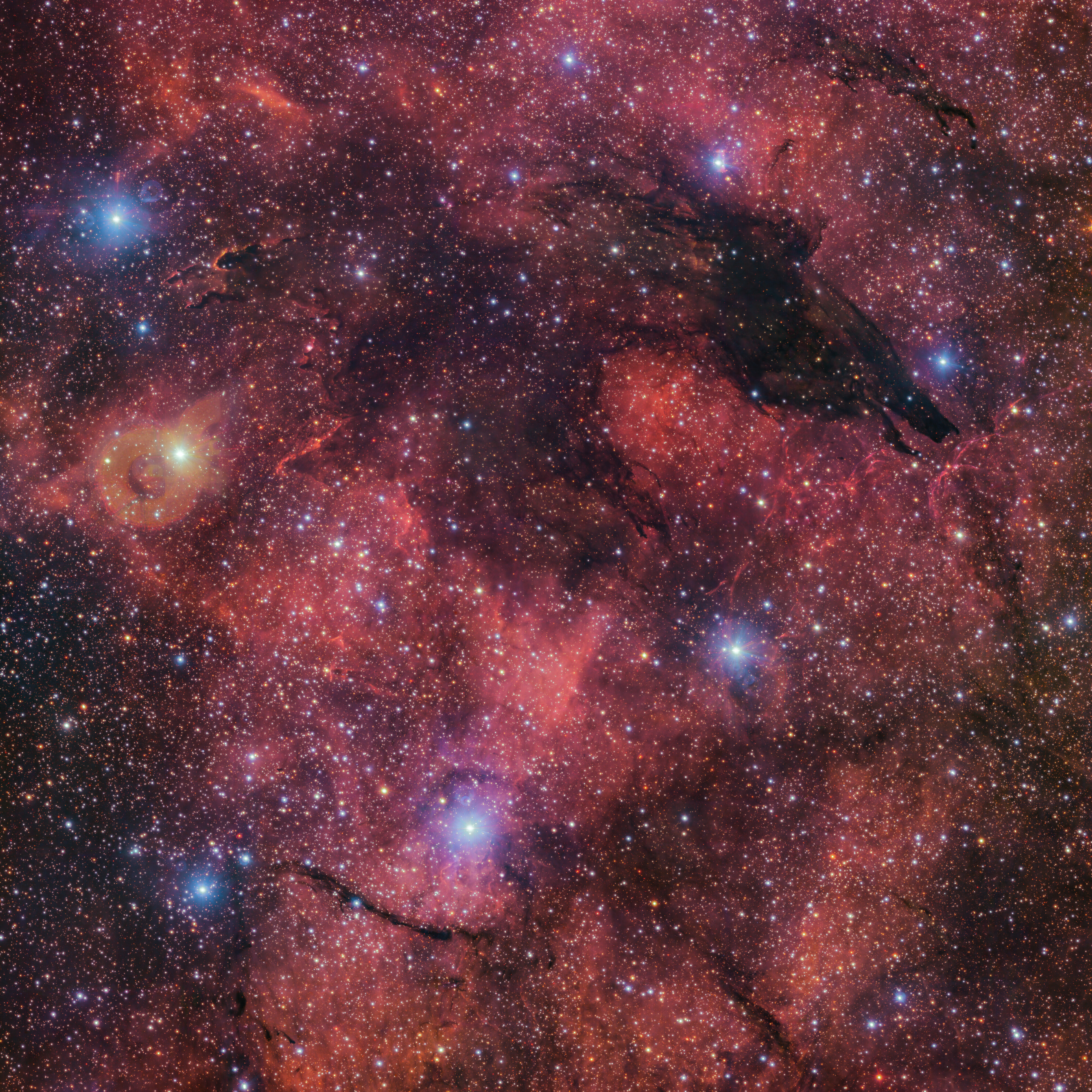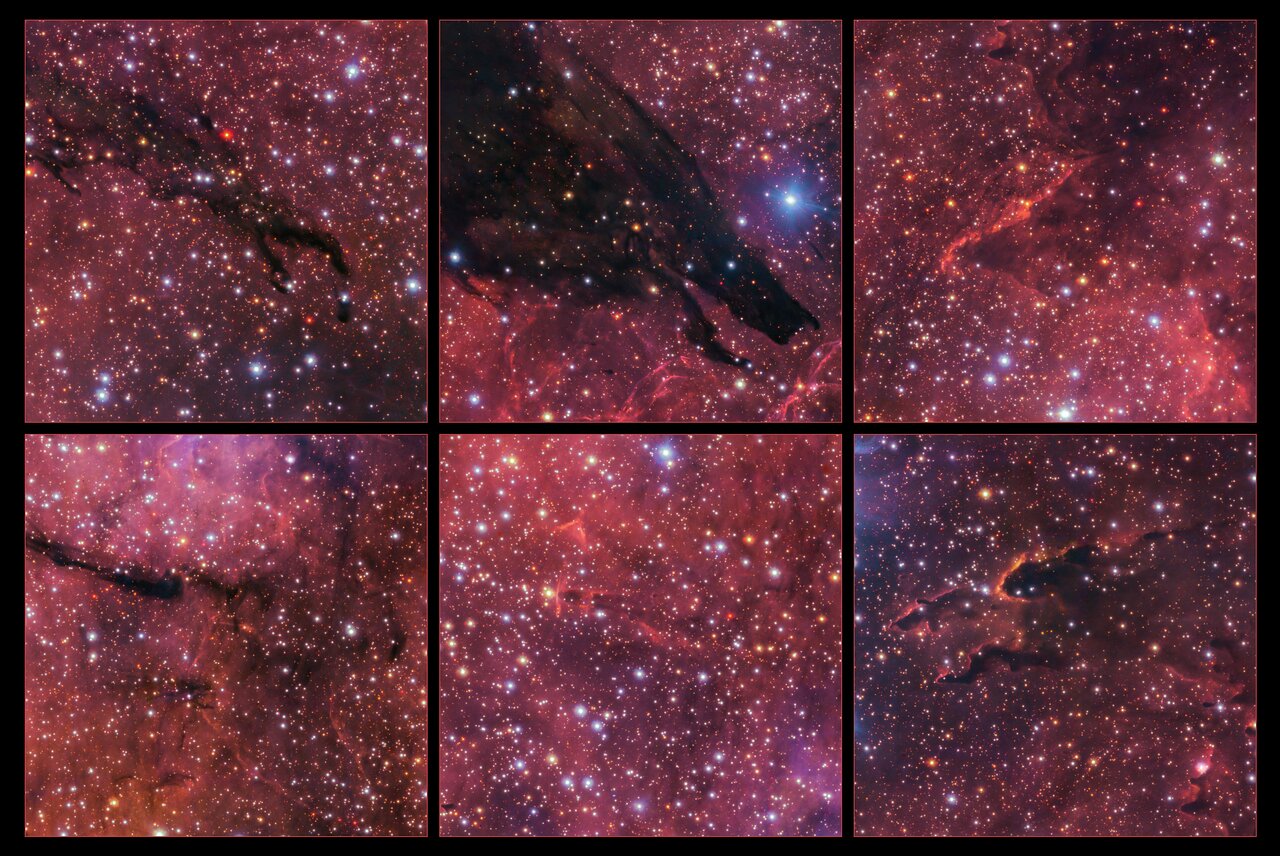Dark Wolf Nebula shows off a howling good view in awesome Halloween image (video)
Part of the larger Gum 55 nebula, the Dark Wolf Nebula, looks suitably blood-curdling in time for Halloween.
The patrons of the Slaughtered Lamb, the traditional Yorkshire pub with some striking decor in John Landis' American Werewolf in London, may want to keep their werewolf on the down low, but the European Southern Observatory (ESO) saw Halloween as the perfect opportunity to unleash an image of a cosmic beast.
This blood-curdling celestial werewolf imaged by the Very Large Telescope (VLT) on Cerro Paranal in the Atacama Desert of Northern Chile is the fittingly named "Dark Wolf Nebula." In the image, the "wolf's head" is clear, and just under this striking apparition are dark claws that almost look like this celestial lycanthrope about to take a swipe at a terrified victim.
Part of the larger Gum 55 nebula, the Dark Wolf Nebula, couldn't be further from the moors of East Proctor, the setting for the unforgettable werewolf attack that opens Landis' 1981 classic that many of us will turn to for a horror fix this Halloween evening. This nebula is situated around 5,300 light-years from Earth near the heart of the Milky Way.

Don't be fooled by the dark swathes of the Dark Wolf nebula that appear to form this cosmic terror. They are anything but empty. These dark patches are filled with dense and cold cosmic gas and dust.
Not only does this material obscure the light from background stars, but it also emits no visible light itself. This is something that sets the Dark Wolf Nebula apart from other nebulas. While absorbing visible light, the matter that comprises the wolf-like nebula does allow lower-energy radiation of longer wavelengths through, including infrared light.
Nebulas such as this are fascinating targets of study for astronomers because their frigid clouds of material can contain newly forged stars, created as over-dense patches undergo gravitational collapse.

The Dark Wolf Nebula's nebulous apparition wouldn't be visible without its bright background, which appears blood red in this image. These clouds are shrouds of hydrogen gas and dust, actively forming stars. Their red hue in these images comes from intense ultraviolet light emitted by the infant stars embedded within them.
While some dark nebulas are visible to the naked eye, such as the Coalsack Nebula, that isn't true of the Dark Wolf Nebula. Fortunately, the VLT is kitted out with a special camera that allows it to map the cosmos in visible light, revealing dark bodies like this as they contrast against their illuminated background.
Get the Space.com Newsletter
Breaking space news, the latest updates on rocket launches, skywatching events and more!
The above image of the Dark Wolf Nebula was created from images taken at varying times as part of the VST Photometric Hα Survey of the Southern Galactic Plane and Bulge (VPHAS+) project. Thus far, VPHAS + has studied around 500 million celestial objects within the Milky Way.
You can explore this arcane library of cosmic wonders yourself here. Who knows, you may, too, uncover something beastly!
Remember, as you explore the unknown on Halloween, stay on the roads, keep clear of the moors, and beware of the moon! Oh... and have fun!
Join our Space Forums to keep talking space on the latest missions, night sky and more! And if you have a news tip, correction or comment, let us know at: community@space.com.

Robert Lea is a science journalist in the U.K. whose articles have been published in Physics World, New Scientist, Astronomy Magazine, All About Space, Newsweek and ZME Science. He also writes about science communication for Elsevier and the European Journal of Physics. Rob holds a bachelor of science degree in physics and astronomy from the U.K.’s Open University. Follow him on Twitter @sciencef1rst.
